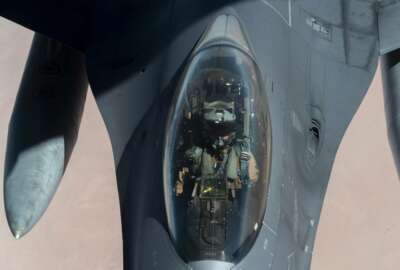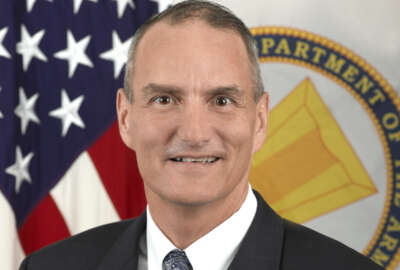
DoD Cloud Exchange: Eileen Vidrine, Air Force
This discussion with Eileen Vidrine is part of Federal News Network’s DoD Cloud Exchange.
The Department of the Air Force is working with the military as a whole to make weapons systems more interconnected and receptive to data inputs. Now it’s working on a strategy to make it even more of a reality.
Eileen Vidrine, chief data officer for the Department of the Air Force, said a data implementation strategy is set to come out later this year.
“That strategy will operationalize for our department Joint All Domain Command and Control (JADC2) capabilities,” she said during Federal News Network’s DoD Cloud Exchange. “The plan is really about getting the right data in the right place at the right time.”
JADC2 is supposed to be the future of military awareness by connecting data to weapons systems and artificial intelligence, in order to deliver polished information to warfighters quickly.
Vidrine said the plan will be the driving force to operationalize data so that airmen and guardians know the roadmap ahead to drive change.
The Air and Space Forces are finding better ways to make data readable and useable through policy and practice to further the future implementation plan.
“Because in the internet of things environment, the volume of data that’s being generated on a daily basis, you have to be deliberate and intentional in terms of having a very deliberate way to collect that and catalog it so that you know where it is, when it is, how to get access to it,” Vidrine said. “From a governance perspective, we now have data officers in our major commands and our field activities as well as our core functional areas. So there is an expert in each organization that can actually be that change agent, or what I would call boots on the ground to really begin that process to really have mature governance of data moving forward.”
To make all of that work the Air Force is relying on the cloud to share data and get it to the right place.
Doing that isn’t all about technology, though; it needs people as well, Virdine said. The Department of the Air Force is investing in its workforce through internships and STEM programs to find people who will bring cloud to the next level. The Air Force Academy also started a data science major and minor.
“That’s going to be game changing for our workforce,” Vidrine said. “Because when those cadets get commissioned and join our active duty roles, they’re going to go into all mission sets, whether it’s logistics, intelligence, space, etc. That’s going to create a new pipeline of high-end talent that is going to give us the velocity.”
The Air and Space forces are also using a digital university so members can continue to further their education.
Vidrine said the Department of the Air Force is already starting to see returns on its data and cloud investments. The installation management group is creating insights on bettering facilities and maintenance, Air Force daycare centers use data to reduce wait times and Air Combat Command is able to conserve more gas in its planes.
“It’s really about leveraging data by taking small use cases that have an enterprise level impact, and then scaling them out. Starting small and growing,” Vidrine said. “Over the last two years, we’ve done several dozen enterprise-focused use cases out of our lab at Andrews Air Force Base, partnering with people in the field to help them use data to drive insight on some of their toughest challenges. They use it as an opportunity to inform that decision making process.”
Copyright © 2025 Federal News Network. All rights reserved. This website is not intended for users located within the European Economic Area.
Scott Maucione is a defense reporter for Federal News Network and reports on human capital, workforce and the Defense Department at-large.
Follow @smaucioneWFED
Related Stories






